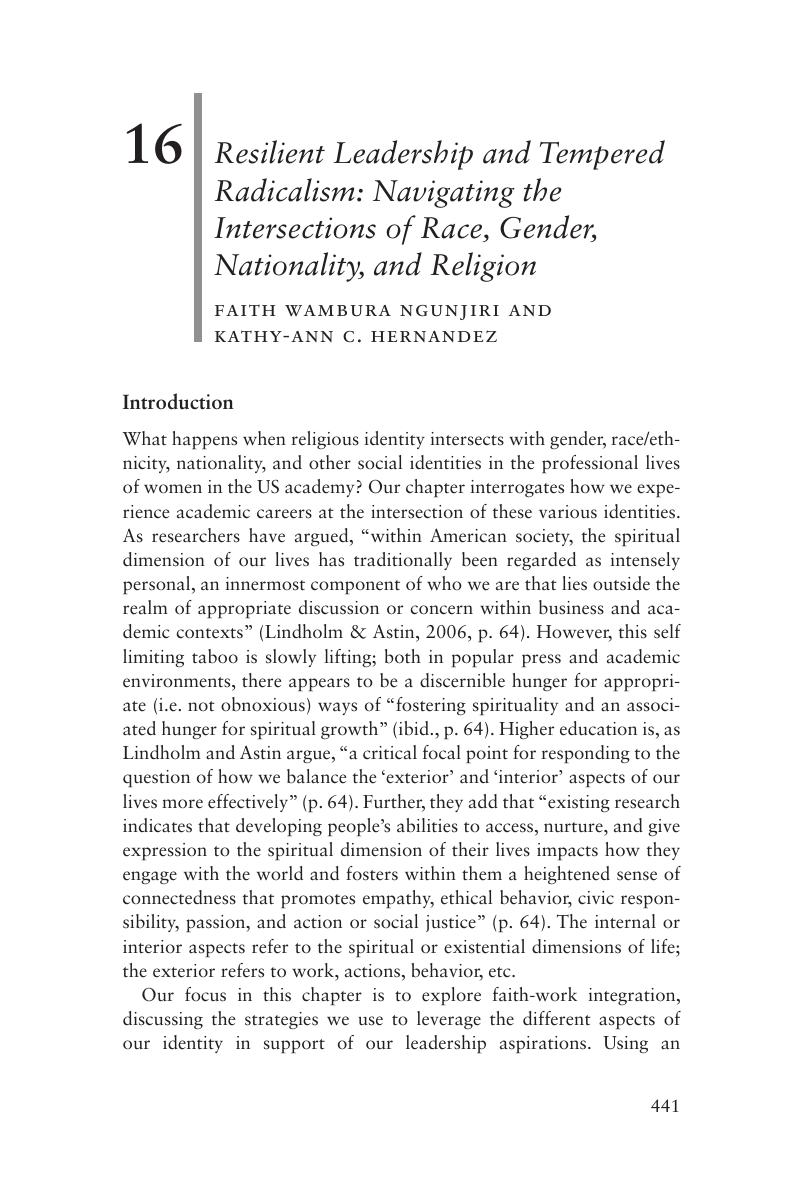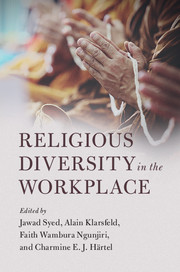Book contents
- Religious Diversity in the Workplace
- Religious Diversity in the Workplace
- Copyright page
- Contents
- Figures
- Tables
- Boxes
- Contributors
- Introduction: The Complex Interface of Work and Religion
- Part I General Frameworks and Sources of Reflection
- Part II Religious Approaches
- Part III Regional Approaches
- Part IV Organizational Approaches
- 14 Organizational Approaches to Religious Diversity in the Workplace
- 15 From Diverse Frameworks to Diverse Attitudes towards Religion at Work: Focus on the French Case
- 16 Resilient Leadership and Tempered Radicalism: Navigating the Intersections of Race, Gender, Nationality, and Religion
- Index
- References
16 - Resilient Leadership and Tempered Radicalism: Navigating the Intersections of Race, Gender, Nationality, and Religion
from Part IV - Organizational Approaches
Published online by Cambridge University Press: 15 December 2017
- Religious Diversity in the Workplace
- Religious Diversity in the Workplace
- Copyright page
- Contents
- Figures
- Tables
- Boxes
- Contributors
- Introduction: The Complex Interface of Work and Religion
- Part I General Frameworks and Sources of Reflection
- Part II Religious Approaches
- Part III Regional Approaches
- Part IV Organizational Approaches
- 14 Organizational Approaches to Religious Diversity in the Workplace
- 15 From Diverse Frameworks to Diverse Attitudes towards Religion at Work: Focus on the French Case
- 16 Resilient Leadership and Tempered Radicalism: Navigating the Intersections of Race, Gender, Nationality, and Religion
- Index
- References
Summary

- Type
- Chapter
- Information
- Religious Diversity in the Workplace , pp. 441 - 470Publisher: Cambridge University PressPrint publication year: 2017



